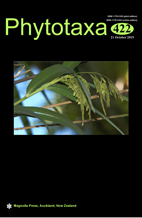Abstract
Molecular data based revision of Leptolyngbya, the largest polyphyletic genus of the family Leptolyngbyaceae (Synechococcales) is imperative. Polyphasic approach to the taxonomic analysis of two (AP9F and AP25) cyanobacteria, tentatively designated positions in the “LPP-group” is described. Cell shapes of AP9F and AP25 were highly elongated whereas the cells of the reference strains (Leptolyngbya boryana and Nodosilinea nodulosa) were occasionally elongated to isodiametrical. Terminal cells of AP9F and AP25 appeared as flattened corners (not rounded), which was different from other Leptolyngbyaceae members. 16S rRNA gene sequences of AP9F (1366 bp) and AP25 (1408 bp) showed 95% and 92% similarities respectively with the non-redundant nucleotide sequences of their closest relatives of the Leptolyngbya genus. Test strains were located in the phylogenetic tree in a clade different from the ones containing the type species. A single operon having both tRNAile and tRNAala genes were present in the ITS regions of AP9F and AP25 compared to two operons in the ITS region of the genera Leptolyngbya and Nodosilinea: one having both tRNAile and tRNAala genes and another lacking both the genes. The secondary structures of the traditionally conservative D-stem region as well as the Box B helix and V3 regions of the ITS operons significantly varied between the test strains and also when compared with the corresponding sequences of L. boryana and N. nodulosa. Molecular phylogenetic and morphological data suggested AP9F and AP25 to be monophyletic taxa for which the names Euryhalinema mangrovii gen. nov., sp. nov. and Leptoelongatus litoralis gen. nov., sp. nov. are proposed respectively.

